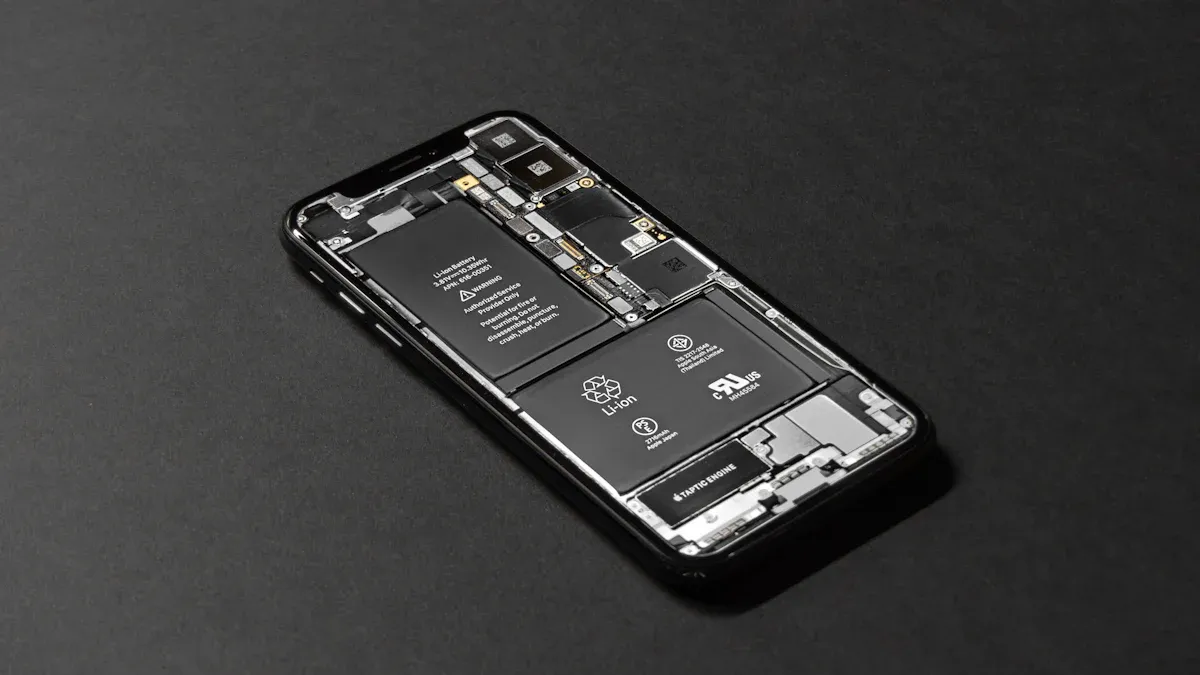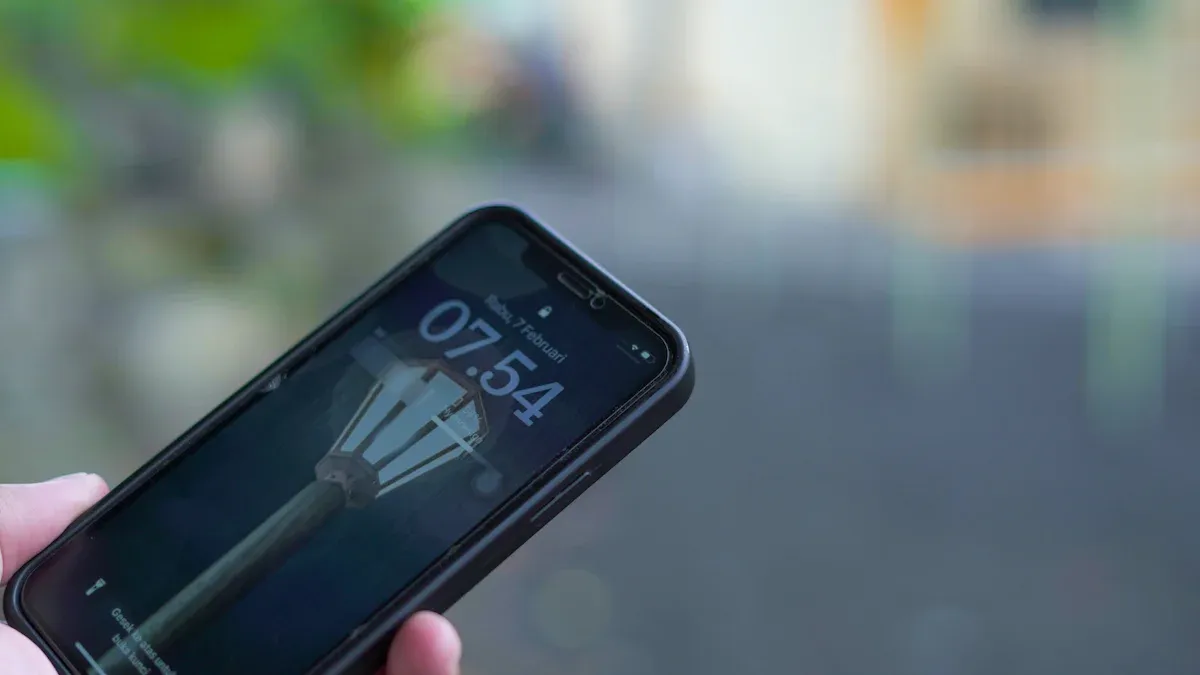
You can detect overcharge lithium battery risks by staying alert to both physical signs and device warnings. Watch for swelling, unusual heat, or strange odors from your battery. Many devices use advanced methods like voltage and current monitoring, as well as special sensors, to warn you about lithium battery overcharge. Studies show that monitoring changes in battery signals or using smart alerts helps you catch overcharge early. Early detection protects battery safety and prevents damage from lithium battery overcharge.
What Is Overcharge
Overcharge Lithium Battery Defined
You may wonder what overcharge means for lithium-ion batteries. Overcharge happens when you keep charging a battery after it reaches its upper voltage or state of charge (SOC) limit. In lithium battery overcharge situations, the charging current continues to flow even though the battery is already full. This can occur if your charger malfunctions or if the battery’s state detection is not accurate. According to lithium battery technology standards, overcharge is charging beyond the battery’s designed voltage or SOC limits. When you push lithium-ion batteries past these limits, you risk serious safety problems. Controlled tests show that lithium battery overcharge can lead to thermal runaway, fire, or even explosion. These tests help experts understand how lithium-ion batteries behave when overcharge occurs. You should always pay attention to the charging process to avoid these dangers.
Conseil : Always stop charging your lithium-ion batteries once they reach full capacity. This simple step helps prevent lithium battery overcharge and keeps your devices safe.
Causes of Overcharge
You can face lithium battery overcharge for several reasons. The most common causes of lithium battery overcharge include charger malfunction, using the wrong charger, or faulty battery management systems. Sometimes, overcharge happens because the charger keeps pushing current into the battery after it is already full. Battery manufacturers explain that overcharge forces too many lithium ions into the negative carbon structure. This damages the battery’s molecular structure and can cause overheating or swelling. Overcharge can also trigger unwanted chemical reactions inside lithium-ion batteries, especially at high temperatures. These reactions increase internal resistance and may break the circuit to stop further heating. To prevent lithium battery overcharge, manufacturers use control circuits and manage charging in two stages: first, a constant current stage, then a constant voltage stage. You should always use chargers designed for your rechargeable lithium batteries and unplug devices once they are fully charged. Keeping lithium-ion batteries in cool, dry places also helps reduce the risk of overcharge.
- Common causes of lithium battery overcharge:
- Charger malfunction or using the wrong charger
- Faulty battery management systems
- Ignoring device warnings or leaving devices plugged in too long
- Charging in hot environments
By understanding these causes, you can take steps to protect your lithium-ion batteries and avoid the risks linked to lithium battery overcharge.
Potential Hazards of Overcharging

Lithium Battery Overcharge Risks
You face serious risks when you allow lithium battery overcharge to happen. Safety literature shows that overcharge in lithium-ion batteries can cause a rapid rise in temperature. This can lead to internal short circuits because too many lithium ions build up on the anode. When this happens, you may see violent combustion or even an explosion. The effects of lithium battery overcharge include dangerous chemical changes inside the battery. These changes can form sharp lithium metal structures called dendrites, which pierce the separator and cause a short circuit. You also risk copper foil dissolving inside the cell, which weakens the battery. Compared to over-discharge, lithium battery overcharge leads to more violent fire and explosion events. You should know that battery thermal runaway is a self-sustaining reaction that makes the battery heat up quickly. This can cause fires or explosions that are hard to control.
Remarque : Overcharging lithium-ion batteries has caused real-life disasters. For example, a lithium battery overcharge led to a fire that destroyed a passenger jet. Fires from e-bike charging setups and smartphone explosions have also been linked to lithium battery overcharge.
The effects of lithium battery overcharge do not stop at fire or explosion. You may also see the battery lose capacity, heat up, and break down faster. The four-stage process of thermal runaway starts with a temperature rise and ends with massive smoke, fire, and combustion. As the battery ages, these effects of lithium battery overcharge become even more severe.
Signs of Overcharge
You can spot the signs of lithium battery overcharge early if you know what to look for. Many users report that lithium-ion batteries show clear warning signs before a major incident. Watch for these common signs:
- Surchauffe
- Gonflement du bloc-batterie
- Discoloration or melting of the battery case
- Sifflements, claquements ou craquements
- Foul or chemical odors
- Visible smoke
- Fire or explosion
If you notice any of these signs, you should stop using the device right away. The effects of lithium battery overcharge often appear as physical changes first. Overheating and swelling are the most common early warnings. If you ignore these signs, the risk of explosion or fire increases. The effects of lithium battery overcharge can also include strange noises or smells. These are signals that the battery is breaking down inside. Always treat these signs seriously to avoid the worst outcomes of lithium battery overcharge.
Detect Overcharge Lithium Battery

Physical Warning Signs
You can spot early warning signs of overcharge lithium battery risks by checking for physical changes in your device or battery. Technical manuals highlight several clear indicators that you should never ignore:
- Swelling of the battery pack or device case. Swelling happens when gas builds up inside the battery due to chemical reactions from overcharge. This is often the first and most obvious sign.
- Overheating during or after charging. If your device feels much hotter than usual, overcharge may be the cause.
- Strange odors, such as a chemical or burnt smell, coming from the battery area.
- Reduced battery life or the battery not holding a charge as long as before.
Conseil : If you notice swelling, heat, or an unusual smell, stop using the device immediately. These signs mean the battery is under stress and could fail soon.
You may also see discoloration, melting, or even hear hissing sounds. These physical warning signs show that lithium-ion batteries are experiencing dangerous internal changes. Early detection of these symptoms helps you prevent more serious problems like fire or explosion. Always check your devices for these changes, especially after charging.
Device and Charger Alerts
Modern devices and chargers use advanced systems to help you detect overcharge lithium battery risks. Battery Management Systems (BMS) monitor important factors like voltage, current, and temperature. When these numbers go outside safe limits, the BMS sends an alert or even stops charging to protect the battery.
- Some devices display messages such as “Fully charged unplug charger.” This message reminds you to unplug the charger after the battery reaches full charge. It helps you avoid unnecessary stress on the battery, but it is not a direct overcharge warning.
- Chargers with protection features cut off power or adjust charging rates if they detect unsafe conditions.
- Temperature sensors and smart algorithms inside the device can change charging speed or stop charging if they sense overheating.
Most lithium-ion devices do not show a specific overcharge alert. Instead, they rely on hardware protections to prevent overcharge lithium battery events. You should always use the charger that came with your device or one recommended by the manufacturer. This helps the BMS and charger work together to keep your battery safe.
Remarque : If your device or charger ever displays a warning about temperature, voltage, or battery health, take it seriously. These alerts are designed to protect you from lithium battery overcharge risks.
Abnormal Battery Behavior
You can also detect overcharge lithium battery problems by watching for abnormal battery behavior. Overcharge causes changes inside lithium-ion batteries that affect how they work. These changes often appear before any physical damage.
- The battery may lose charge faster than normal or show a sudden drop in power.
- You might notice the device shuts down unexpectedly or restarts during use.
- Charging may take longer, or the battery may not reach full charge.
- The device could become unusually warm even when not in use.
Scientists have found that overcharge events cause violent reactions inside the battery. These reactions create extra heat, increase pressure, and release gases like hydrogen and carbon dioxide. The battery’s voltage may drop suddenly, and the battery may become less efficient. Over time, these problems get worse, and the risk of thermal runaway increases.
| Abnormal Behavior | What It Means for Battery Safety |
|---|---|
| Sudden voltage drops | Chemical instability, risk of failure |
| Steady heat buildup | Overcharge is causing internal damage |
| Increased gas production | Early sign of possible thermal runaway |
| Reduced charge retention | Battery health is declining |
Appel : Gas sensors and advanced BMS can detect these early warning signs before you notice them. Combining gas detection with voltage and temperature monitoring gives you the best chance to catch lithium battery overcharge early.
If you see any of these abnormal behaviors, stop using the device and seek professional help. Early action protects you and extends the life of your lithium-ion batteries. Always stay alert to changes in how your device charges or performs. This is the best way to ensure battery safety and avoid the dangers of overcharging battery cells.
Prevent Lithium Battery Overcharge
Circuits de protection
You can prevent lithium battery overcharge by using a battery protection circuit board. This board includes a protection IC and MOSFET switches. The protection IC checks the battery voltage during charging. When the voltage reaches the overcharge point, the IC tells the MOSFET to turn off. This action disconnects the charging current and stops further charging. The overcharge protection circuit also uses a delay to avoid false alarms from noise. Some boards add PTC devices for extra overcurrent and temperature protection. The battery protection circuit board works across a wide temperature range, keeping your battery safe in many conditions. Without this board, lithium-ion batteries face a much higher risk of bulging, leaking, or even catching fire. The battery protection circuit board also provides short-circuit protection control, which helps prevent dangerous incidents.
Systèmes de gestion des batteries
A système de gestion de la batterie, or BMS, gives you another layer of overcharge protection. The BMS monitors the voltage and current of each cell. It balances the charge across all cells, so no single cell gets overcharged. The BMS also controls the battery temperature during charging. If the voltage or temperature goes above safe charging limits, the BMS reduces or stops the charging current. Modern BMS technology can detect problems in milliseconds and has a diagnostic accuracy of over 99.9%. This high level of overvoltage protection keeps your battery safe and extends its life. The importance of BMS cannot be overstated. It combines overcharge protection control, short-circuit protection control, and thermal management. These technical solutions to solve the overcharge problem help prevent fires and explosions in lithium-ion batteries.
Pratiques de charge sûres
You play a key role in battery safety by following the best practices of lithium battery overcharge prevention. Always use the charger that comes with your device or one approved by the manufacturer. Charge your device in a flat, dry area away from sunlight and flammable materials. Never leave your device charging overnight or unattended. Remove the battery or device from the charger as soon as it reaches full charge. Store and charge batteries at room temperature. Avoid using extension cords or adapters that are not approved. Check your battery for changes in shape, color, or smell. If you notice anything unusual, stop using the battery right away.
Conseil : Follow this checklist to prevent lithium battery overcharge:
- Remove devices from the charger once fully charged.
- A utiliser uniquement chargeurs approuvés par le fabricant.
- Follow all instructions for charging and storage.
- Avoid leaving batteries on the charger for long periods.
- Buy replacement batteries and chargers from trusted sources.
By using a battery protection circuit board, a battery management system, and safe charging habits, you can prevent lithium battery overcharge and keep your devices safe.
You can spot lithium battery overcharge risks by staying alert to signes précurseurs.
- Watch for changes in charging efficiency or heat during charging.
- Look for swelling, cracks, leaks, or burn marks on the battery.
- Never leave your battery charging after it is full.
Safe charging habits help keep your batteries reliable.
- Use certified chargers and store batteries in cool, dry places.
- Unplug devices once charged and avoid fast charging when possible.
Stay proactive to protect your devices and yourself.
FAQ
What should you do if your lithium battery gets hot while charging?
Unplug your device right away. Let the battery cool in a safe place. Do not use or charge it again until you check for damage. If the battery stays hot, replace it.
Can you use any charger for your lithium battery?
No. Always use the charger that comes with your device or one approved by the manufacturer. Using the wrong charger can cause overcharge and damage your battery.
How often should you check your battery for warning signs?
Check your battery every time you charge it. Look for swelling, heat, or strange smells. Early checks help you spot problems before they get worse.
Is it safe to leave your device charging overnight?
You should avoid charging overnight. Charging for too long increases the risk of overcharge. Unplug your device when it reaches full charge to keep your battery safe.

